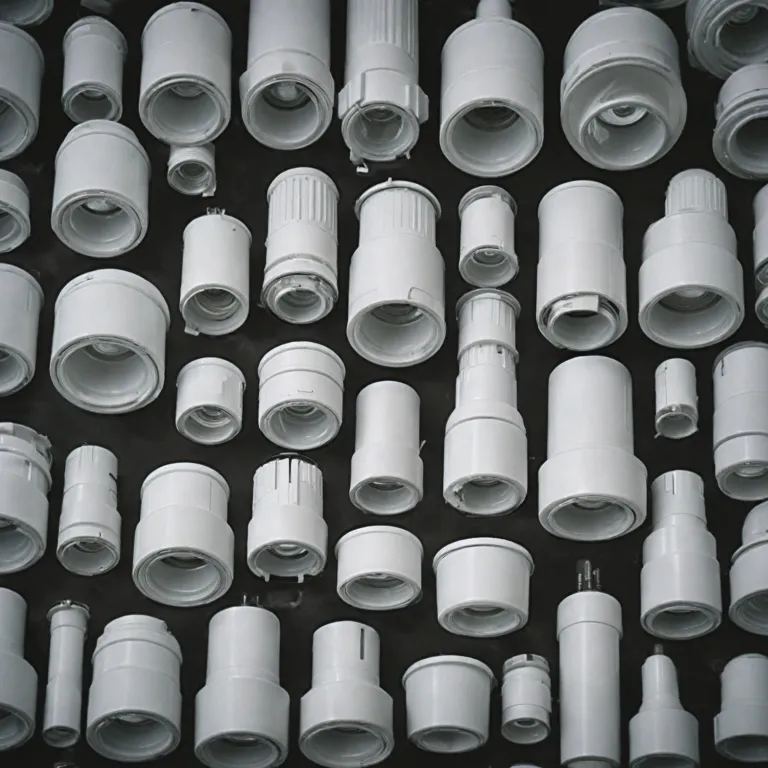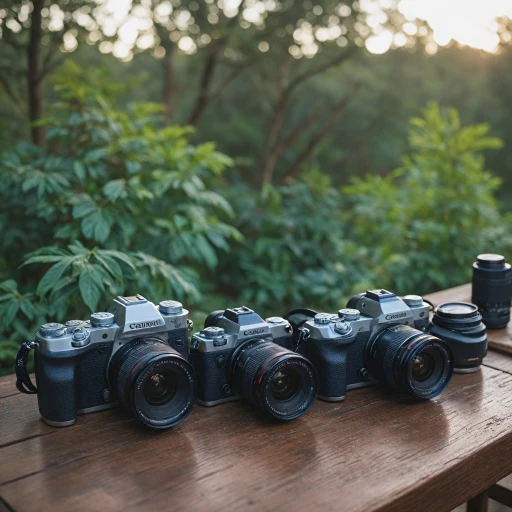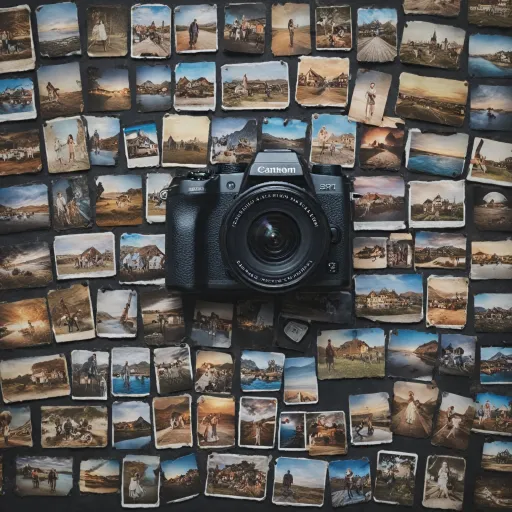
The Basics of Digital Cameras
Exploring the Basics of Capturing Moments
Understanding the role of a digital camera is pivotal for anyone venturing into the world of photography, whether professionally or as a hobby. These devices have revolutionized how we capture and preserve memories, offering an unprecedented combination of convenience, versatility, and technical prowess.
At its core, a digital camera captures images using sensors instead of film, converting light into digital data. This gives users immediate access to their snaps which can be edited, printed, or shared online in minutes. The transformation from analog to digital photography now empowers users with a vast array of features that can adapt to various needs and shooting environments, whether you're photographing your child's birthday or aiming for professional-quality images.
Before diving into the different types of digital cameras or key features, it's essential to grasp their foundational components. Much like a fluorescent lampholder plays a crucial role in holding a lamp in place, ensuring optimal illumination, a digital camera relies on various elements to function effectively. From sensors to lenses, each component intertwines to deliver the perfect shot.
For instance, understanding the sensor size can greatly impact the image quality. Larger sensors typically result in better images, especially in low-light conditions. However, they can also increase the size and price of the camera. There are compact models that balance size and functionality, akin to a medium pin in a fluorescent fixture that precisely fits to ensure efficient light distribution.
Similarly, reliability and ease of use are as critical in digital cameras as they are in fixtures like linear fluorescent setups or lampholder slides. Considering these basics grants a solid foundation, enabling users to make informed choices as they navigate this exciting field.
Types of Digital Cameras
Exploring Different Categories of Digital Cameras
When diving into the world of digital cameras, it's crucial to understand the various types available. Each category serves different needs, much like how a fluorescent lampholder is designed for specific lighting setups. Here's a breakdown of the main types of digital cameras you might encounter:
- Compact Cameras: These are your everyday point-and-shoot cameras. They're designed for ease of use and portability, much like a low profile lamp holder that fits seamlessly into a tight space. While they offer convenience, they might lack the advanced features found in other types.
- DSLR Cameras: Known for their versatility and high image quality, DSLRs are akin to a high order pedestal slide in the lighting world, providing robust performance. They allow for interchangeable lenses and manual settings, making them ideal for enthusiasts and professionals.
- Mirrorless Cameras: These cameras offer a medium pin between the compact and DSLR categories. They provide excellent image quality and interchangeable lenses without the bulk of a DSLR, much like a linear fluorescent lamp holder that offers flexibility in lighting setups.
- Bridge Cameras: As the name suggests, bridge cameras serve as a bridge between compact and DSLR cameras. They offer a tall profile of features, including a fixed lens with a wide zoom range, making them versatile for various photography needs.
- Action Cameras: Designed for capturing high-speed action, these cameras are compact and durable, similar to a rotary locking lampholder that secures a lamp in place during movement. They're perfect for adventure enthusiasts.
- Medium Format Cameras: These are the high profile choice for professional photographers who need the utmost in image quality and detail. They are akin to a fluorescent sockets holder that supports high-performance lighting solutions.
Choosing the right type of digital camera depends on your specific needs, much like selecting the appropriate fluorescent lamp holder for a lighting project. Whether you're looking for something compact for everyday use or a professional-grade camera for high-quality photography, understanding these categories will help you make an informed decision. For more insights on enhancing your camera experience, consider exploring how a stereo microphone can elevate your audio capture capabilities.
Key Features to Consider
What to Look For in a Digital Camera?
When choosing a digital camera, understanding the key features can make or break your photographic experience. Whether you’re buying for the first time or looking to upgrade, here's a closer look at crucial aspects to consider. Image SensorThe image sensor is a core component determining image quality. Larger sensors generally capture more light, resulting in better images in low-light conditions. Understanding how sensors compare can help you select the right product that balances price and performance. Megapixel Count
While it's not the only feature affecting image quality, higher megapixels mean more detail in your photos. However, beyond a certain point, especially with small sensor cameras, more megapixels might not contribute significantly to image quality and could impact storage needs. Lenses and Mounts
If you prefer versatility, consider cameras with interchangeable lenses. Evaluate the types of lampholders like fluorescent or an unshunted lampholder pin in some lenses. The availability of adapters can also allow for medium pin or high pedestal slide lenses, offering more creative control. Focus Mechanism
Autofocus systems vary in speed and accuracy. Your choice should depend on the subject matter you plan to capture. Rotary locking, pin pedestal focus, and tall profile locking mechanisms provide varying emphasis on precision versus quick adjustments. Video Recording
Consider cameras with robust video capabilities, including high resolution and frame rates. A sturdy base capable of supporting a linear fluorescent lampholder can stabilize your camera setup, ensuring quality recording. Connectivity Options
Modern cameras come equipped with essential connectivity features like Wi-Fi and Bluetooth. This enables easy sharing and remote access. Leading models incorporate slide stationary or slide plunger features for smoother operation of external controls. Battery Life
Battery longevity varies widely. Cameras fitted with medium to tall profile battery holders ensure extended shooting sessions without frequent recharges. Prioritize cameras with efficient battery management systems and accessible charging interfaces. Additional Features
Look for features like image stabilization, low-light performance, and a versatile lamp holder for extensive situations. Some cameras offer unique utilities like slide grid layouts for organizational purposes, enhancing craftsmanship. Ultimately, aligning these features with your needs requires thoughtful comparison. If storage concerns are a priority, consider how many pictures a 16GB card can hold to determine if supplemental storage is necessary. Choosing a camera that checks all your boxes will bring your vision to life.
Understanding Camera Settings
Mastering Your Camera's Settings
Understanding the settings of your digital camera is crucial to capturing the perfect shot. While the basics of digital cameras provide a foundation, delving into the settings allows you to fully utilize your camera's capabilities. Here’s a guide to help you navigate through these settings effectively.
ISO Sensitivity
ISO sensitivity is a key setting that affects the brightness of your photos. A low ISO is ideal for bright environments, while a high ISO is useful in low-light conditions. However, be cautious as increasing ISO can introduce noise into your images, similar to how a fluorescent lamp might flicker when the lampholder is not properly secured.
Aperture and Shutter Speed
The aperture controls the amount of light entering the camera, much like how a lampholder pin might regulate the flow of electricity to a fluorescent lamp. A wide aperture (low f-number) allows more light, creating a shallow depth of field, while a narrow aperture (high f-number) provides a deeper focus. Shutter speed, on the other hand, determines how long the camera's sensor is exposed to light. Fast shutter speeds freeze motion, whereas slow speeds can create motion blur, akin to the effect of a rotary locking mechanism in a lamp holder.
White Balance
White balance settings help you achieve accurate color representation in your photos. Adjusting this setting ensures that the colors in your images are true to life, similar to how a fluorescent lampholder ensures the correct color temperature of a linear fluorescent light. Experiment with different white balance presets to see which one best suits your environment.
Focus Modes
Modern digital cameras offer various focus modes, including manual and automatic options. Manual focus gives you complete control, much like adjusting a slide plunger in a pedestal slide mechanism. Automatic focus, however, is convenient for quick shots, similar to a profile snap feature in a tall profile lamp holder.
By mastering these settings, you can enhance your photography skills and capture stunning images, whether you're shooting in a high or low light environment. Remember, practice makes perfect, and experimenting with different settings will help you find the right balance for your photography style.
Common Challenges in Digital Photography
Overcoming Common Obstacles in Digital Photography
Digital photography offers numerous advantages, yet it can come with its fair share of challenges. Whether you're a beginner or seasoned in capturing moments, understanding these difficulties and how to manage them, ensures a smoother experience. First, when comparing digital and traditional photography, one of the recurring challenges is dealing with low light conditions. These can impact the quality of your pictures, often leading to high noise levels that degrade image quality. Using a low ISO setting and a tripod can help stabilize the image, offering better results in dim environments akin to how a rotary locking mechanism stabilizes a light fixture. Another common issue is understanding and setting the correct exposure. A well-exposed photo captures the details perfectly and avoids highlights or shadows overpowering the main subject. Utilizing the camera's histogram can guide you, much like a list grid helps categorize and separate data efficiently. White balance inaccuracies can also alter the look of a photo drastically. Experimenting with the various preset modes, such as daylight or fluorescent lamp settings, provides an opportunity to correct color casts. This approach is similar to adapting lamp holders for different lighting fixtures, ensuring you achieve the desired effect. Maintaining your camera's functionality over time can also be an issue. Sensor dust or mechanical issues can result from inconsistent care or improper settings, much like how an unshunted fluorescent lampholder might experience interruptions in delivering even lighting. Addressing these through regular maintenance and understanding how to properly manage your camera settings ensures long-lasting performance. Slide stationary actions like experimentations with movement in shots can help develop a style and cope with photo blurring. Practicing panning or increasing the shutter speed can mitigate motion blur and serve as a creative pursuit. Lastly, continually evolving technology may seem overwhelming. However, staying informed of advancements and taking time to familiarize yourself with new features can greatly enhance photographic creativity and capability, much like optimizing the use of tall profile or straight lamp holders to achieve efficient lighting setups.Maintenance and Care for Digital Cameras
Preserving Your Digital Camera's Lifespan
Maintaining your digital camera in top condition ensures that you avoid common issues like image quality degradation or mechanical malfunctions that can occur if a camera is not properly cared for. Fortunately, regular maintenance practices can help you retain the aesthetic and functional integrity of your camera.- Regular Cleaning: Keeping your camera clean is fundamental to preserving its condition. Use a microfiber cloth to gently clean the lens and the camera body. You may also use a blower brush to remove dust particles from delicate areas without causing damage.
- Proper Storage: Cameras are sensitive to environmental conditions. Storing them in a cool, dry place prevents issues such as mold or corrosion. Consider investing in a protective case to safeguard against physical damage and dust exposure.
- Battery Care: To enhance battery life, make sure you fully charge and discharge your battery without partial charges that can reduce storage capacity over time. Additionally, remove the battery from the camera if it's not being used for extended periods.
- Firmware Updates: Check for and install any available firmware updates from the manufacturer. These updates can improve camera functionality and fix any software bugs.
- Regular Inspections: Conduct periodic inspections for any mechanical issues such as sticky buttons or slow mechanical functions. Early detection can help in maintaining optimal performance and avoid costly repairs.












